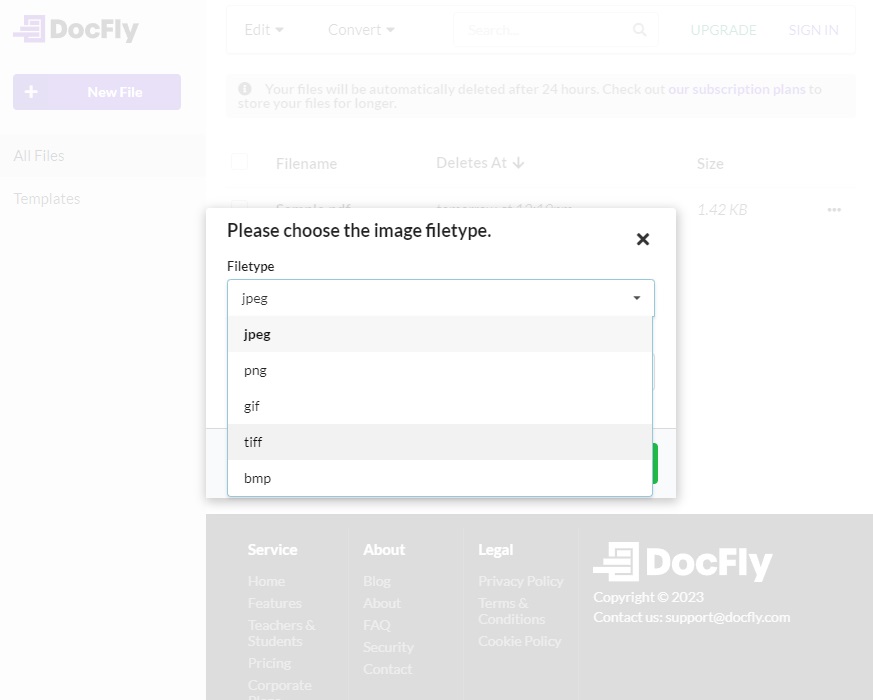How to Convert a PDF to a TIFF File Format
Converting a PDF document into a TIFF file format can be a valuable solution for various situations. Whether you're archiving documents, preparing images for professional printing, or ensuring compatibility with specific systems, understanding the process of converting a Portable Document Format file to a TIFF image is essential. In this guide, we'll explore the ins and outs of this conversion, explaining what a TIFF file is, highlighting the reasons behind the conversion, and providing step-by-step instructions to efficiently transform your PDF documents. Let's dive into the specifics of how to convert PDF to TIFF and unveil the benefits and techniques that come with it.
Table of Contents
What is a TIFF file?
A TIFF file, which stands for Tagged Image File Format, is a widely used file format for storing raster graphics and high-quality images. What sets TIFF apart from other image file formats, like JPEG or PNG, is its capacity to maintain a lossless image quality. This means that every detail, color, and pixel of the image is preserved with utmost precision. In essence, TIFF files are perfect for images where accuracy and clarity are of paramount importance. They are commonly used in professional settings such as publishing, graphic design, and medical imaging, where the visual fidelity of the image must remain unaltered. Moreover, TIFF files can support both uncompressed and compressed image data, making them adaptable for various applications. This section will provide you with a deeper understanding of TIFF files and why they are favored for specific tasks.
Why Should You Convert PDF to TIFF?
There are many reasons to convert PDF files to TIFF format, and it is particularly useful in several scenarios. Here are some compelling reasons why you might need to make this conversion.
Maintaining Image Quality
If you have graphical or image-rich content within a PDF, converting it to TIFF is an excellent choice. TIFF files retain the highest image quality without any loss, ensuring that every pixel and color remains as intended. For files that do not require high-resolution, such as Excel files, converting PDF format files to TIFF makes less sense.
Archival and Preservation
TIFF is a preferred format for long-term archival and preservation purposes. When you convert PDFs to TIFFs, you ensure that your documents or images will stand the test of time with uncompromised quality.
Printing and Publishing
For professional printing or publishing purposes, TIFF is a popular choice. It is the go-to format for tasks like high-quality image printing, professional photography, and document layouts where precision and detail are crucial.
Compatibility
TIFF files are compatible with a wide range of applications and platforms, making them versatile for use in different software. This ensures that your documents will be accessible and usable in various contexts.
OCR (Optical Character Recognition)
If you need to extract text from a PDF, converting it to TIFF can be a helpful intermediary step. Many OCR software tools work more effectively with TIFF files than PDFs, especially for scanned documents.
Medical Imaging
The medical field frequently uses TIFF for storing high-resolution medical images like X-rays, MRIs, and CT scans. Converting medical documents or images from PDF to TIFF is essential for maintaining image clarity and fidelity.
The choice to convert a PDF to TIFF largely depends on your specific needs, but when image quality and preservation are paramount, TIFF is the output format of choice among image file output formats. In the following section, we will explore how to perform this conversion efficiently.
Steps to Convert a PDF to a TIFF file
DocFly is an online PDF editor that offers several conversion tools. Step-by-step instructions to convert a PDF to a TIFF file using the easy-to-use online tool are provided below.
Step 1: Access DocFly and upload your file
Open your web browser and go to the page to convert PDF to TIFF on DocFly’s website. Once on the DocFly website, click on “Click to upload your file.” You can either drag and drop your PDF file into the indicated area or click on the button to upload the PDF you want to convert.

Step 2: Convert your file
From within the dashboard click on the breadcrumbs (…) on the right-hand side of your filename, then click on “Convert to Image”. From within the dropdown, choose “tiff” as the filetype and enter a password (if the file is password-protected). Following conversion, you will see the converted TIFF image in the dashboard.

Step 3: Export Your Converted TIFF file
Once the conversion is complete, you can download your image file to your device or export it to a cloud storage service like Google Cloud.

As shown above, with DocFly, the conversion process is quick, efficient, and tailored to meet your needs.
Tips for Converting PDF to TIFF File Format
Converting PDF to TIFF is a straightforward process, but a few tips can help ensure the best results. Here are some valuable tips to consider when making this conversion.
Adjust DPI (Dots Per Inch)
DPI determines the image's resolution. Higher DPI settings result in crisper images but also larger file sizes. For most documents, a DPI setting of 300 is sufficient. For high-quality images, such as photographs, you might choose 600 DPI or higher.
Convert Individual Pages
If you have a multipage PDF but only need to convert specific pages, choose an online converter that allows you to select individual PDF pages. This can save time and storage space.
Check Compression Options
TIFF files can be compressed or uncompressed. Uncompressed TIFF files maintain the highest quality but are larger. Compressed TIFF files reduce file size but might have a minor impact on quality. Choose the compression option that best suits your needs.
Consider Color Modes
TIFF supports various color modes, including RGB, CMYK, and grayscale. Select the color mode that matches your document's content. For example, use CMYK for professional printing and RGB for digital graphics.
Quality Control
After conversion, review your TIFF files to ensure they meet your quality standards. Check for any pixelation, distortion, or other issues that might have occurred during the conversion process.
By following these tips, you will be well-prepared to convert your PDFs to TIFF with precision and efficiency, making the most of the advantages this format offers in terms of image quality and versatility.

Emily Shaw is the founder of DocFly. As a software developer, she built the service from scratch and is responsible for its operations and continued growth. Previously, she studied engineering at the University of Hong Kong and mathematics at the University of Manchester.
Loved what you just read? Share it!
